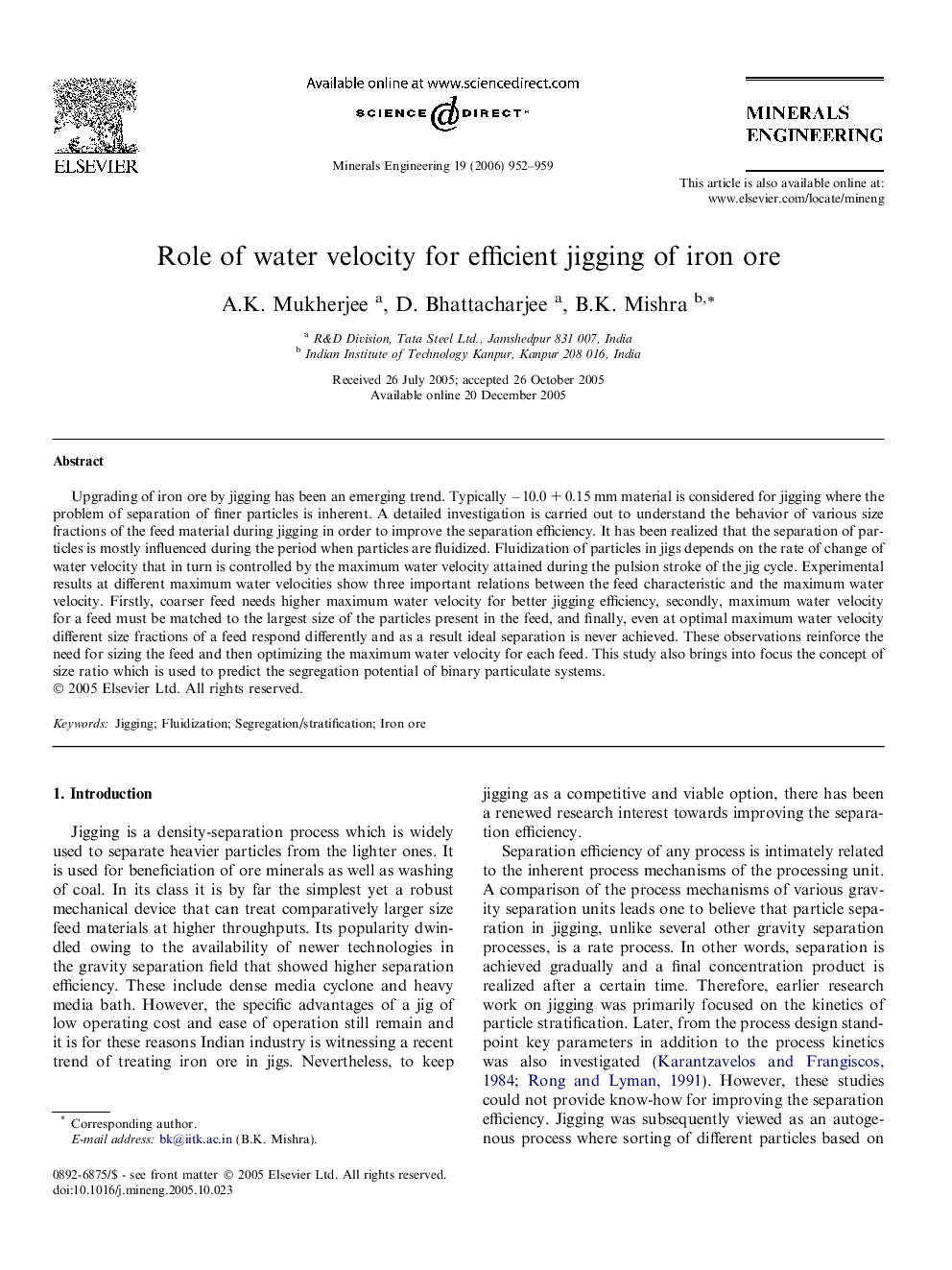| Article ID | Journal | Published Year | Pages | File Type |
|---|---|---|---|---|
| 234770 | Minerals Engineering | 2006 | 8 Pages |
Upgrading of iron ore by jigging has been an emerging trend. Typically −10.0 + 0.15 mm material is considered for jigging where the problem of separation of finer particles is inherent. A detailed investigation is carried out to understand the behavior of various size fractions of the feed material during jigging in order to improve the separation efficiency. It has been realized that the separation of particles is mostly influenced during the period when particles are fluidized. Fluidization of particles in jigs depends on the rate of change of water velocity that in turn is controlled by the maximum water velocity attained during the pulsion stroke of the jig cycle. Experimental results at different maximum water velocities show three important relations between the feed characteristic and the maximum water velocity. Firstly, coarser feed needs higher maximum water velocity for better jigging efficiency, secondly, maximum water velocity for a feed must be matched to the largest size of the particles present in the feed, and finally, even at optimal maximum water velocity different size fractions of a feed respond differently and as a result ideal separation is never achieved. These observations reinforce the need for sizing the feed and then optimizing the maximum water velocity for each feed. This study also brings into focus the concept of size ratio which is used to predict the segregation potential of binary particulate systems.
